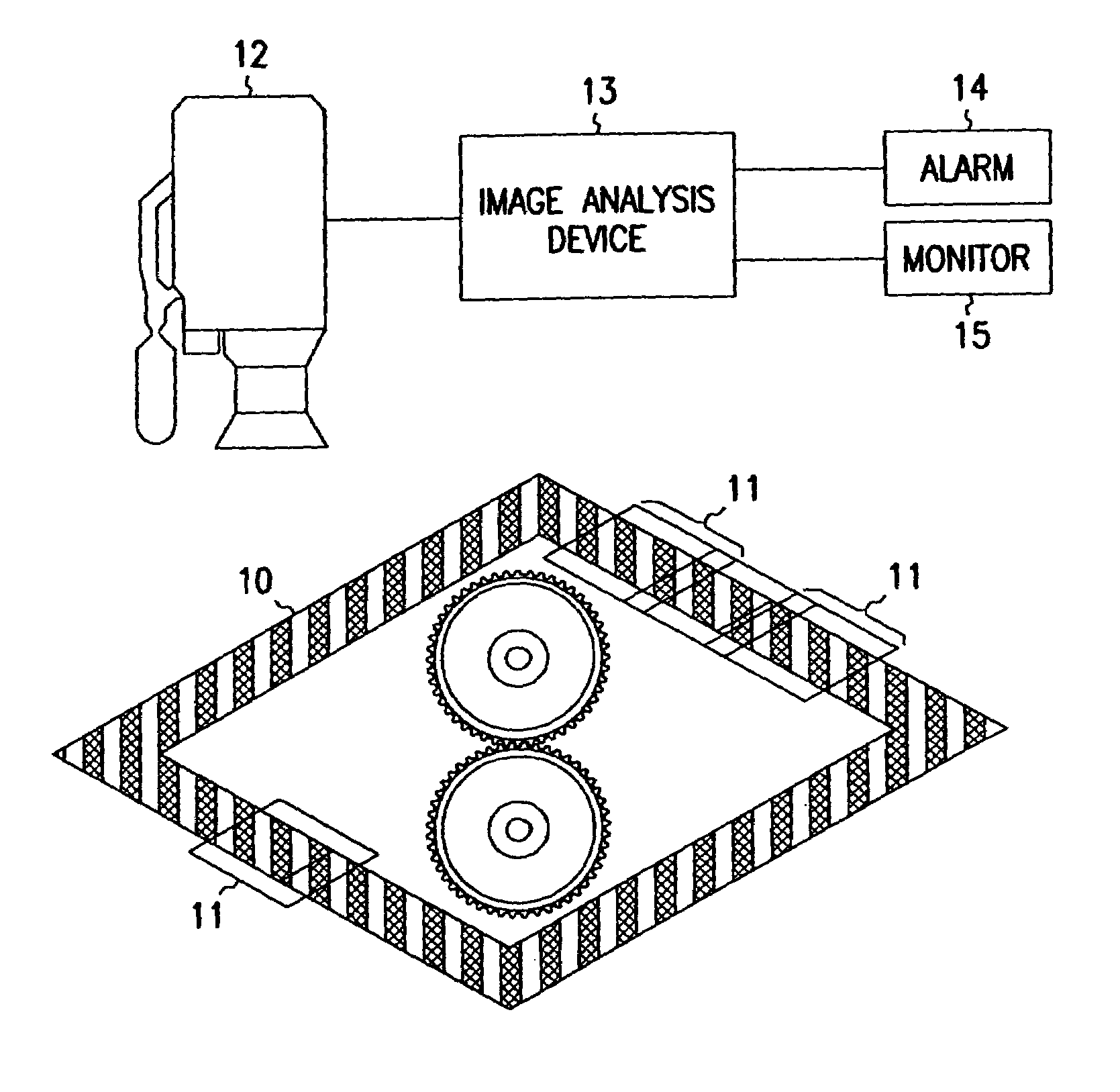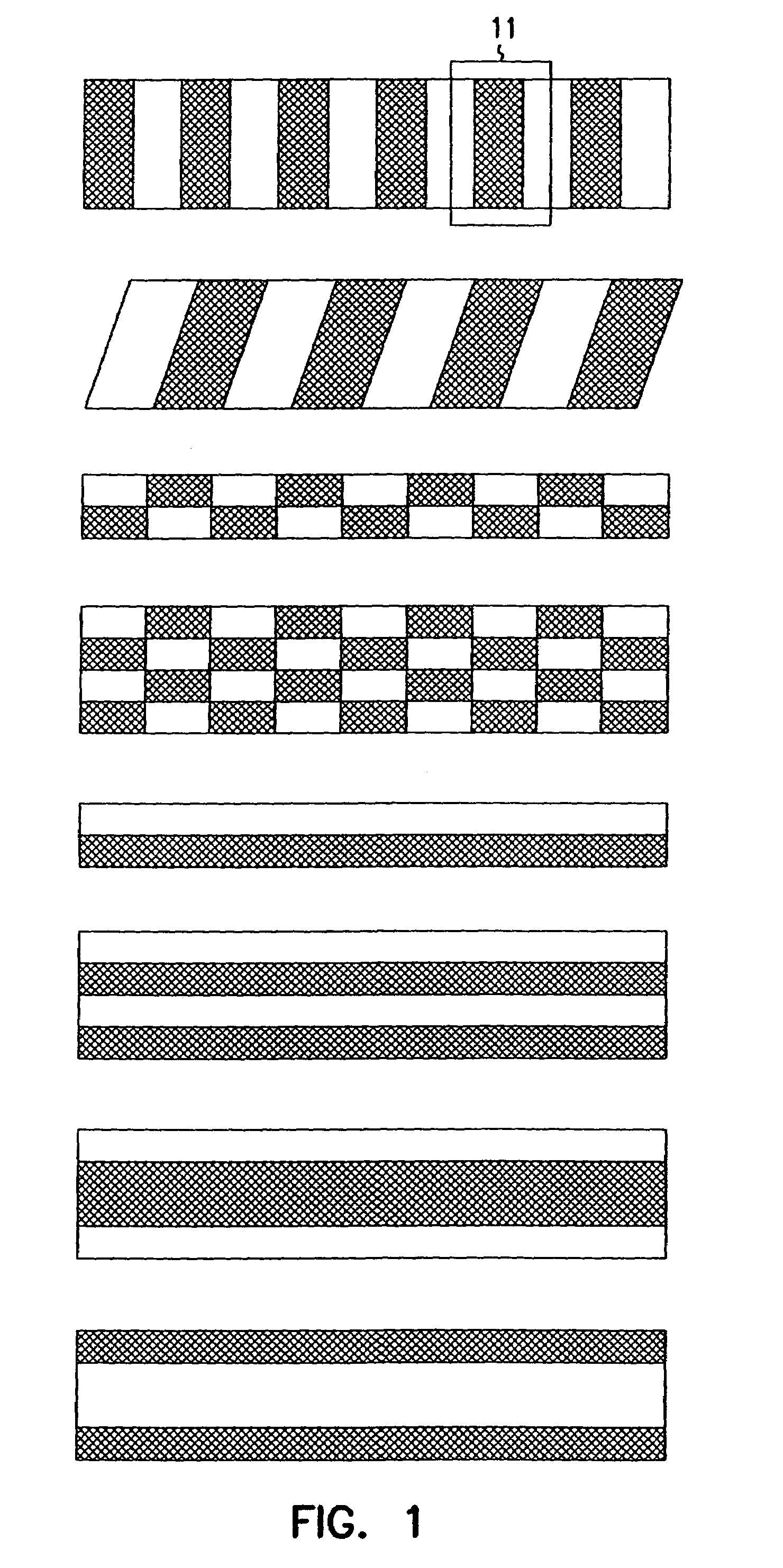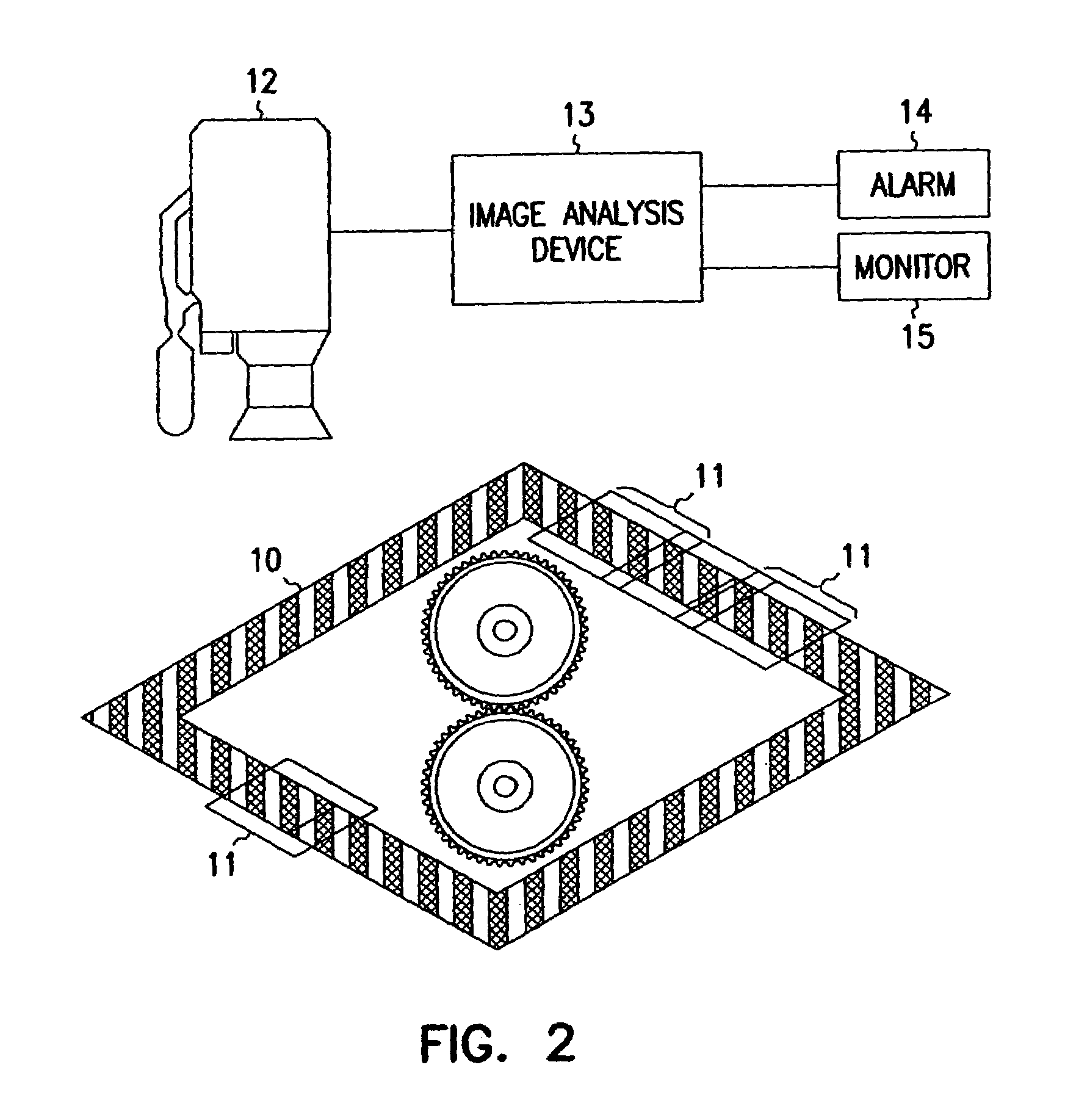Object detection
- Summary
- Abstract
- Description
- Claims
- Application Information
AI Technical Summary
Benefits of technology
Problems solved by technology
Method used
Image
Examples
Embodiment Construction
[0017]Unless indicated otherwise, the term “image” used in the current specification will refer to a digitized image having an array or vector of numbers representing brightness (that is, luminance intensity) levels. Each brightness level ranges from 0 (the darkest) to Imax (the brightest). In embodiments of the present invention, the actual numerical intensity levels may range from 0 to 1.0 or from 0 (00000000 in binary notation) to 255 (11111111 in binary notation), for example, depending on the specific equipment utilized. Equipment for digitizing images and converting to arrays of brightness levels is well known in the art. The numerical brightness levels are frequently referred to as pixels.
[0018]According to the present invention, each captured image of the monitored area is divided up into portions or segments. These portions or segments are referred to as mask windows. The size of each mask window is chosen so that it is no bigger than the approximate size of the smallest ob...
PUM
 Login to View More
Login to View More Abstract
Description
Claims
Application Information
 Login to View More
Login to View More - R&D
- Intellectual Property
- Life Sciences
- Materials
- Tech Scout
- Unparalleled Data Quality
- Higher Quality Content
- 60% Fewer Hallucinations
Browse by: Latest US Patents, China's latest patents, Technical Efficacy Thesaurus, Application Domain, Technology Topic, Popular Technical Reports.
© 2025 PatSnap. All rights reserved.Legal|Privacy policy|Modern Slavery Act Transparency Statement|Sitemap|About US| Contact US: help@patsnap.com



